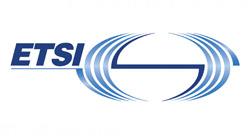ETSI

ETSI, the European Telecommunications Standards Institute, is involved in standardising many of the technologies that work together to connect things in the Internet of Things (IoT).
About ETSI
ETSI produces globally-applicable standards for Information and Communications Technologies (ICT), including fixed, mobile, radio, converged, broadcast and internet technologies. ETSI standards enable the technologies on which business and society rely. ETSI standards for GSM, DECT, Smart Cards and electronic signatures have helped to revolutionise modern life all over the world.
ETSI is officially recognised by the European Union as a European Standards Organisation. It has more than 800 member organizations worldwide, drawn from 64 countries and five continents. Members include the world’s leading companies and innovative R&D organisations.
IoT credentials
ETSI is a member of oneM2M, the global partnership initiative which aims to provide a standardised M2M interface. This will enable different devices to be connected in the IoT, irrespective of the underlying network.
The work of oneM2M builds on the activities of ETSI’s own committee, TC SmartM2M, which has developed, and now maintains, our specifications for a standardised platform:
- Requirements (ETSI TS 102 689)
- Functional architecture (ETSI TS 102 690)
- Interface descriptions (ETSI TS 102 921)
TC SmartM2M is also addressing IoT standardisation gaps identified in European Commission Large Scale Pilot projects.
IoT application areas covered:
ETSI addresses various applications of M2M technology including:
- Smart appliances
- Smart metering
- Smart cities – including networking, energy efficiency and accessibility
- Smart grids
- eHealth
- Telemedicine and the Internet Clinic
- Medical implants
- Body Area Networks
- Intelligent Transport Systems – including telematics and all types of communications in vehicles, between vehicles and between vehicles and fixed locations. ETSI also addresses the use of Information and Communications Technologies for rail, water and air transport, including navigation systems.
- Wireless Industrial Automation – standards for radio equipment to be used in factories. Current work (details on ETSI Portal) includes standards for ensuring electromagnetic compatibility (EMC) in industrial environments.
IoT technology areas covered:
- Security for the IoT – various aspects of security such as electronic signatures, lawful interception, security algorithms and smart cards as well as cyber security
- Low power supplies in the IoT:
- Radio spectrum requirements – helping to find the necessary radio spectrum for connecting things wirelessly in the IoT.
- Embedded communications modules – ETSI has developed a baseline specification using Surface Mount Technology. This will simplify the integration of modules from different manufacturers in a wide range of M2M applications.
Links to further information and ongoing standardisation projects:
